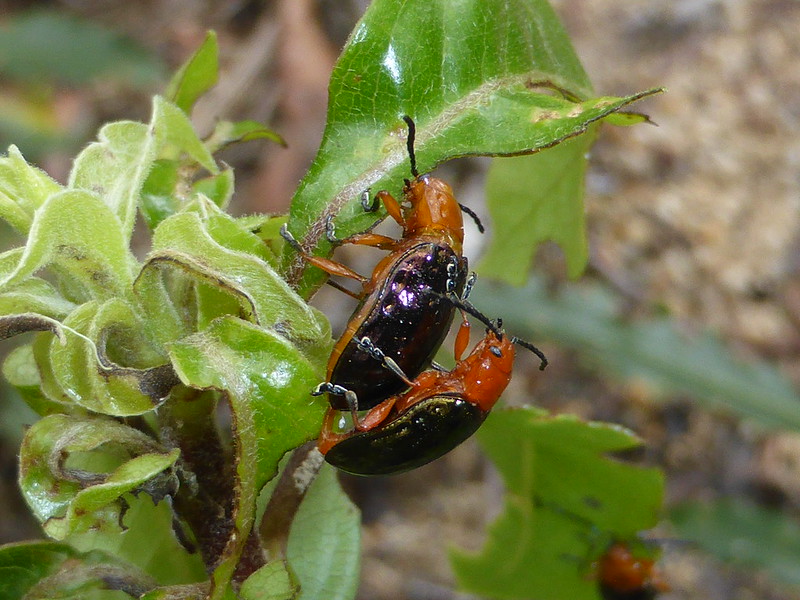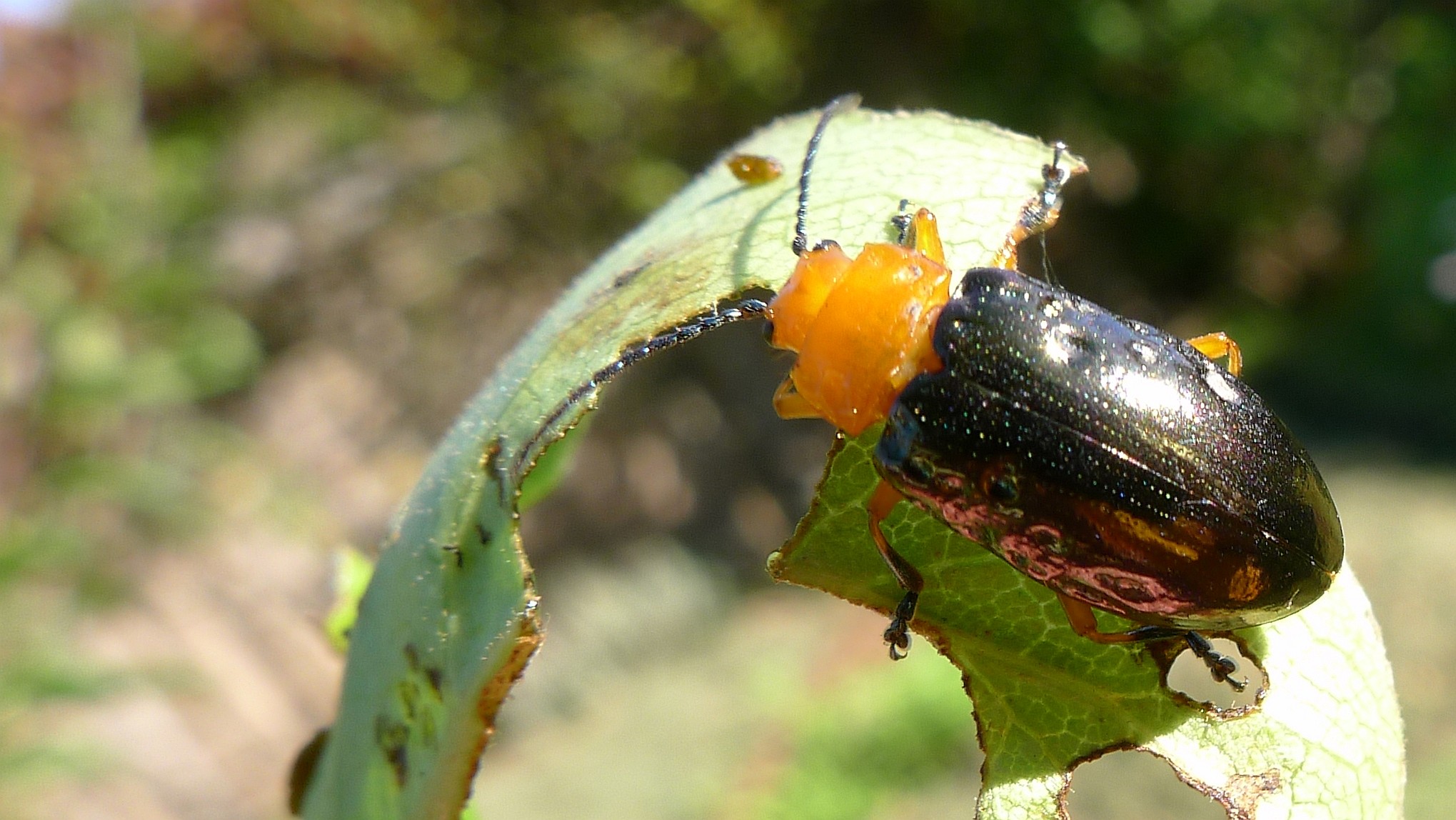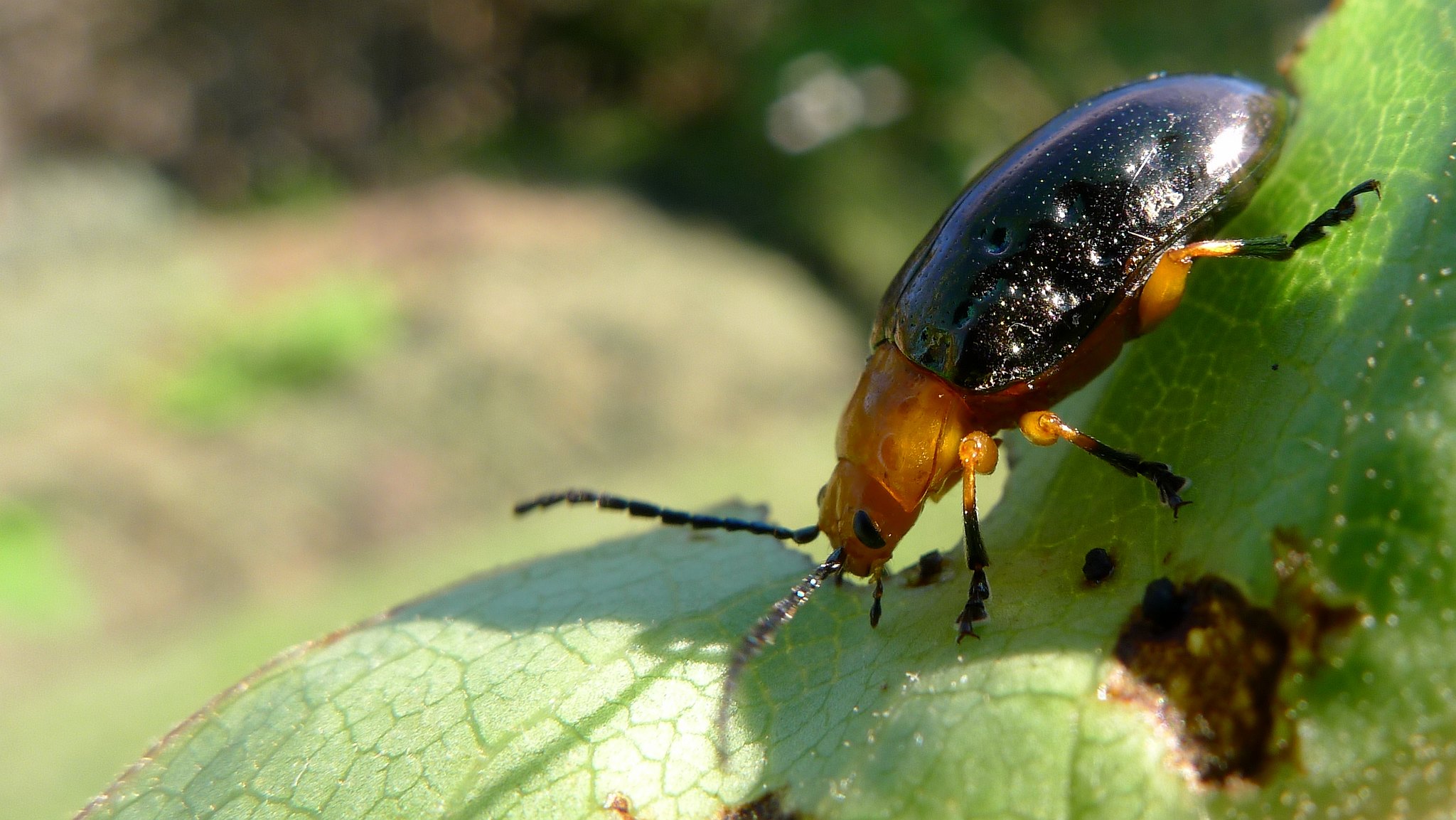Leaf Beetles are also known as Pittosporum Beetles or Bursaria Beetles, after their host species.
The beetles have a bright red head and pronotum with an entirely blue or green body. The larvae have a brown head with six distinct black eye spots on each side. Pale underside, dark upperside with dark spines.
They are aposemtatic, meaning they are posionous to visual predators. Be very careful if handling them.
Size
0.6 - 1.4 cm long; body narrow and flat. Length to width ratio ranges from 2:1 to 2.5:1. Length to height ratio is 3.5:1.
Behaviour
Diet
Entirely leaf-based diet. Bursaria spinosa, a ClimateWatch plant species, can be a host plant.
Breeding
Eggs are laid on leaves or stems. Larvae hatch within one week. When fully grown, larvae migrate to the base of their food plant and pupate in the soil below for several months.
Field Guide
Improve your identification skills. Download your Leaf Beetle field guide here!





